It is rightly said that “Nurture beats Nature” and this is very much applicable in the field of education.
The most important aspect which decides the success or failure of a student is his/her educational environment and the most crucial part of it is the classroom activities.
A good teacher knows how to make use of classroom activities to make learning more effective and interesting for students.
There are different types of classroom activities that can be used to engage students and make learning more effective.
By making use of these activities, teachers can help their students learn better and achieve greater success. In addition, there are many benefits to using classroom activities.
In this article, we shall discuss the importance of classroom activities and also how to make them more effective.
Classroom Activities Can Help Students Learn
Despite the popular belief that students learn best through passive learning. It has been proven through research that students learn more when they are actively engaged in the learning process.
Classroom activities can help students learn. Dr. Seuss once said, “The more that you read, the more things you will know. The more that you learn, the more places you’ll go.” This is especially true in the classroom.
Classroom activities can help students learn in a variety of ways.
Firstly, they can help students understand new concepts by providing a hands-on and interactive way to learn. Secondly, classroom activities can help students develop problem-solving skills and improve their thinking skills.
Lastly, classroom activities can help students build relationships with their classmates and teachers, which can lead to a more positive educational experience.
All in all, classroom activities are an essential tool for any teacher looking to engage their students in the learning process. By using a variety of different activities, teachers can ensure that all students are able to learn in a way that best suits them.
5 Ways Classroom Activities Help Build Community In The Classroom
Classroom activities can help students learn more and build community in the classroom. By using a variety of activities, teachers can ensure that their students are engaged and learning.
One reason why classroom activities help students learn is that they allow students to work together and develop important teamwork skills.
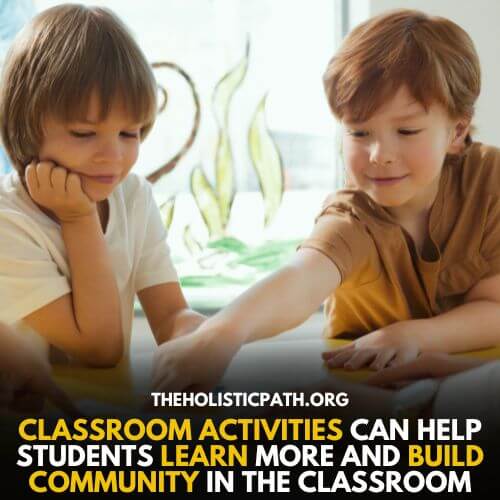
When students are working together to solve a problem or discuss an idea, they learn how to cooperate and communicate with others.
This can help them in their future careers, as well as in their personal lives.
In addition to helping students learn, classroom activities can also help build community in the classroom. When students are working together on tasks or discussing ideas, they get to know each other better and develop relationships.
This can help make the classroom feel like a community, where students feel comfortable working together and supporting each other.
Classroom activities can also help students feel more connected to the material they are learning. When students are engaged in active learning, they are more likely to see the relevance of the material to their lives. This can help them learn more effectively and develop a deeper understanding of the material.
When students are engaged in classroom activities, they not only learn more but also build community in the classroom. In a study of over 2,000 students, researchers found that students who were engaged in classroom activities felt a sense of community with their classmates.
This was especially true for students who were engaged in activities that required teamwork or cooperation. These students felt that they had a common purpose with their classmates and were more likely to feel connected to the group.
Classroom activities can help students feel connected to their classmates and help them build relationships with one another. This can be especially important in high school and college, where students often come from different backgrounds and may not know each other well.
Classroom activities can help students learn more effectively and help them build community in the classroom. By using a variety of activities, teachers can ensure that their students are learning and feeling connected to one another.
5 ways classroom activities help students build community:
- Working together on classroom tasks helps students feel like they are all part of a team.
- Students learn about one another’s interests and hobbies, which helps them feel closer to one another.
- Sharing stories and personal experiences help create a sense of camaraderie among classmates.
- Laughing and joking together help students feel more at ease with one another.
- Participating in class discussions allows students to get to know each other better and exchange ideas.
9 Types Of Classroom Activities
Classroom activities can vary from teacher to teacher, but there are some general types that are commonly used. These activities can be used to promote student engagement, deepen understanding of content, and assess student learning. Let’s take a closer look at each type of activity.
1. Problem-Solving Tasks
Problem-solving tasks are a great way to help students learn. These tasks involve students solving a problem or completing a task. There are many different types of problem-solving tasks, and teachers can use a variety of tasks to help their students learn.
Some examples of problem-solving tasks include:
- Completing a math problem.
- Solving a word puzzle.
- Building a model.
- Writing a story.
- Planning a party.
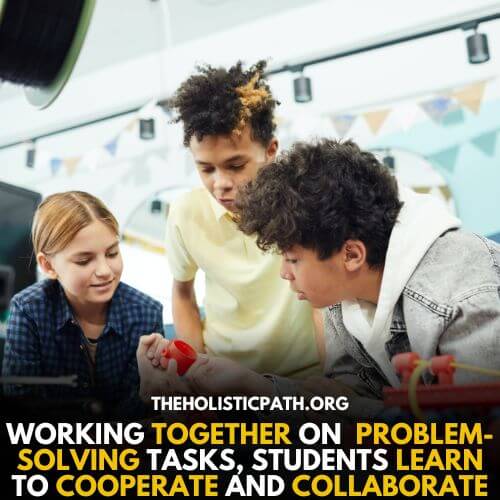
When students are given a problem to solve, they must use critical thinking skills to figure out the solution. This helps them learn how to think logically and creatively. In addition, when students work together on problem-solving tasks, they learn how to cooperate and collaborate. This is an important skill that will be useful for them both in school and in their future careers.
2. Group Work
Group work is another great way for students to learn. In group work, students work together on a task or project. This allows them to share ideas and learn from one another. Group work also helps students develop teamwork skills.
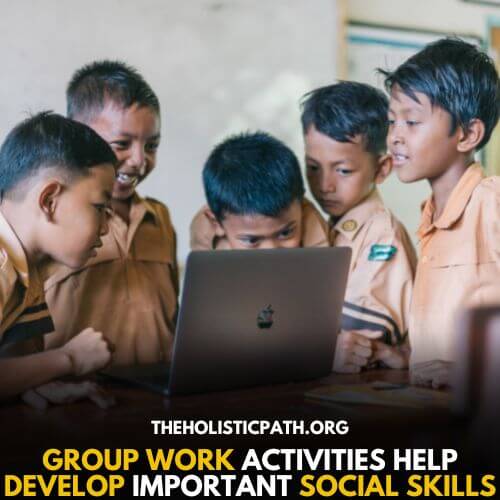
There are many different types of group work, and teachers can use a variety of tasks to help their students learn. Some examples of group work include:
- Discussing a topic.
- Completing a project.
- Studying for a test.
- Planning a trip.
When students are working together in groups, they must communicate with each other and cooperate in order to get the job done. This helps them develop important social skills that will be useful for them later in life.
In addition, when students are working together on projects, they can learn from each other’s strengths and weaknesses. This is helpful for them as they continue their education and enter the workforce.
3. Debates
Debates are another great way for students to learn. In debates, students discuss an issue and present their arguments for and against it. This allows them to develop critical thinking skills and learn how to argue logically. Debates also help students develop public speaking skills.
Debates are beneficial for both high school and college students. High school students can use debates as practice for college, and college students can use debates to improve their critical thinking skills. In addition, debates can help prepare students for jobs where they will need to present their ideas publicly.
4. Discussion:
Discussion is another common type of classroom activity. In a discussion, the students are given a question or problem to discuss with their classmates. This can be done in small groups or as a whole class. Discussions allow students to share their ideas and learn from each other.
5. Problem-Solving
Problem-solving is an activity where the students are given a problem to solve. This can be a math problem, a science problem, or a problem from everyday life. Problem-solving allows students to apply what they have learned in class to real-world situations.
6. Projects
Projects are activities where the students work together on a task. Projects can be based on anything from history to science to art. They allow students to learn by doing and engage in hands-on learning.
7. Writing Assignments
Writing assignments are another common type of classroom activity. Writing assignments can vary from short responses to essays. They allow students to practice expressing their thoughts in writing and develop their writing skills.
8. Hands-On Learning
Hands-on learning is when students are allowed to touch, feel, and experiment with things. This type of learning is often used in science classes. Students can do experiments and explore different concepts. Hands-on learning can help students learn more about a topic since they are able to see and experience it firsthand.
9. Problem-Based Learning
Another type of activity is problem-based learning. In this type of activity, students are given a real-world problem to solve. They must work together to come up with a solution, and then present their findings to the class. Problem-based learning is a great way to help students apply what they are learning in class to real-world situations. It also encourages critical thinking and teamwork skills.
Ideas For Fun And Engaging Classroom Activities
There are endless possibilities when it comes to fun and engaging classroom activities. One way to get started is to think about your student’s interests. What do they like to do outside of school? Are they into sports, music, art, or computers? Once you have an idea of what your students enjoy, you can start looking for related activities that you can do in the classroom.
There are many fun and engaging classroom activities that can help keep students interested in learning. One idea is to have a classroom movie day where students watch a movie related to the topic they are studying. For example, if you are learning about Ancient Greece, you could watch the movie “300.”
Another idea is to have a classroom debate day where students debate different topics related to the curriculum. This can help students learn how to argue their points effectively and develop critical thinking skills.
A final idea is to have a classroom treasure hunt day where students use clues to find hidden treasures around the classroom or school. This can be a fun way for students to get up and move around while also practicing problem-solving skills.
No matter what your student’s interests are, there are plenty of fun and engaging activities you can do in the classroom. Try mixing things up by rotating through a variety of different activities throughout the year.
This will keep your students interested and engaged, and it will help prevent them from getting bored.
How to make classroom activities more effective: 3 Ways
There are several ways to make classroom activities more effective.
1. Classroom activities can be more effective if they are tailored to the student’s needs.
Not all classroom activities are effective for all students. Teachers should take into account the student’s abilities and interests when selecting activities. For example, if most of the students in a class are struggling with a particular topic, the teacher might want to use an activity that focuses on that topic.
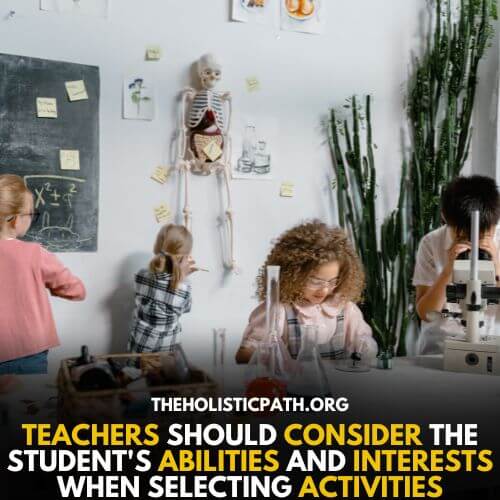
In addition, teachers should consider the students’ learning styles. Some students learn best by doing, while others learn best by listening. Teachers can adapt activities to meet the needs of all their students.
2. Classroom activities can be more effective if they are varied.
If all of the classroom activities are similar, students will quickly become bored. Teachers should mix up their activities to keep students engaged. For example, they can alternate between group work and individual work, or between hands-on tasks and verbal tasks.
3. Classroom activities can be more effective if they are well-planned.
Teachers should take time to plan out their classroom activities. This will help ensure that the activities are appropriate for the students and that they will be effective in helping students learn. In addition, planning ahead will help teachers avoid wasting class time on ineffective activities.
How to choose the right activities for your class
When choosing classroom activities, it is important to consider the needs of your students. Each class is different, and therefore each class will benefit from different activities. There are many different types of activities that can help students learn and build community, and it is important to choose the right activities for your class.
One way to choose the right activities is to consider the level of your students. If you have students who are struggling with a subject, you may want to choose activities that are more challenging. On the other hand, if you have students who are excelling, you may want to choose activities that are less challenging.
You should also consider the interests of your students when choosing activities. If your students are interested in a certain topic, you may want to choose an activity that focuses on that topic. In addition, if your students enjoy working together, you may want to choose a group activity.
It is also important to think about the goals of your class. What do you want your students to learn? Choose activities that will help them achieve these goals.
Finally, you should consider the size of your class. If you have a large class, you may want to choose activities that allow for group work or that can be done independently. For a small class, you may want to choose more interactive activities.
By considering these factors, you can choose the right classroom activities for your students.
10 Benefits of using classroom activities
Classroom activities can provide many benefits for students. Some of these benefits include:
- Increased engagement and motivation – When students are engaged in classroom activities, they are more motivated to learn. This increased motivation leads to improved academic outcomes.
- Improved critical thinking skills – Classroom activities that require students to think critically help them develop strong problem-solving skills.
- Enhanced understanding of concepts – Active learning through classroom activities helps students understand the concepts being taught better than traditional lecture-based learning.
- Greater mastery of the material – When students are engaged in activities that require them to use the material they have learned, they are more likely to remember and understand it better.
- Improved communication and collaboration skills – Group work and other collaborative activities help students learn how to work together effectively and communicate with others.
- Development of creativity and innovation – Classroom activities that allow for student creativity and innovation help foster a spirit of creativity and innovation in students.
- Strengthened academic skills – Activities that require students to use specific academic skills, such as reading, writing, math, etc., help students develop those skills further.
- Increased engagement with school – When students are actively engaged in their learning, they are more likely to have a positive attitude towards school and be successful learners.
- Enhanced self-confidence and self-esteem – Participating in classroom activities that allow for success helps boost students’ confidence and esteem.
- Greater interest in future education and careers – Engaged students often develop a greater interest in continuing their education after high school and in pursuing careers in fields they are interested in
Classroom activities promote creativity and critical thinking
Classroom activities can help promote creativity and critical thinking. When students are engaged in creative activities, they are more likely to think outside the box and come up with new ideas. In addition, when students are challenged to think critically, they develop problem-solving skills and learn how to think critically about information.
Creative activities can help students learn new concepts in a fun and interesting way. For example, students can be given a project in which they must use creativity to design a new product. This type of activity allows students to explore their creativity and come up with new ideas.
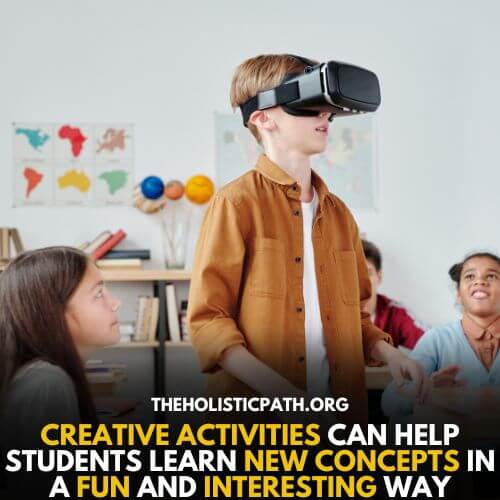
Critical thinking activities can help students develop important skills. For example, when students are asked to debate a topic, they learn how to argue their point of view effectively. In addition, when students are asked to solve a problem, they learn how to think critically about information and find solutions.
Classroom activities can help promote creativity and critical thinking in students. When students are engaged in creative activities, they are more likely to think outside the box and come up with new ideas. In addition, when students are challenged to think critically, they develop problem-solving skills and learn how to think critically about information.
Importance Of Classroom Activities-Conclusion
It’s clear that classroom activities are important for students of all ages. They provide an opportunity to engage with the material in a hands-on way, promoting understanding and retention. Additionally, they can foster collaboration and social skills development.
Classroom activities also give students a chance to take risks and experiment in a safe and supportive environment. Ultimately, the importance of classroom activities lies in their ability to enhance the learning process and help students reach their full potential.
